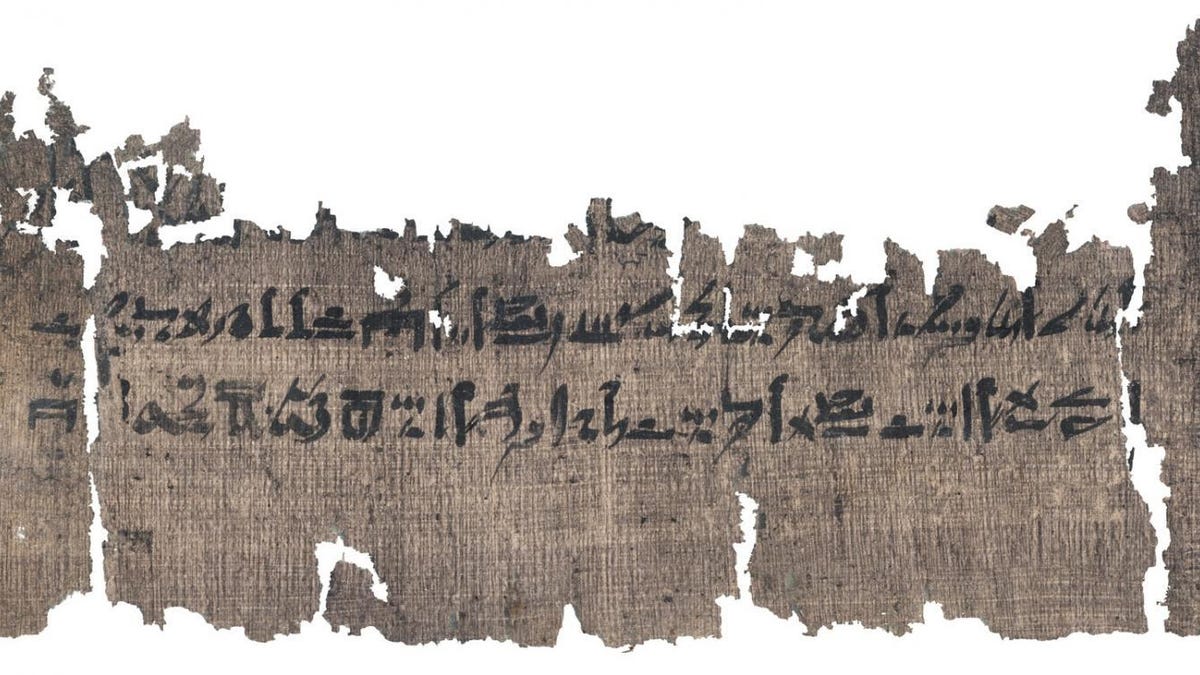Mummification manual from ancient Egypt details how to embalm faces
Scientists have identified the oldest known manual on mummification.
Scientists have found an ancient Egyptian instruction manual for embalming the faces of the dead. The manual was found within a 3,500-year-old medical manuscript known as the Papyrus Louvre-Carlsberg.
According to a University of Copenhagen statement Friday, written references to Egyptian embalming practices for mummies are extremely rare. There had been only two known texts on the subject. "Egyptologists were therefore surprised to find a short manual on embalming in a medical text that is primarily concerned with herbal medicine and swellings of the skin," the university said.
The newly discovered papyrus predates the previously known texts and delves into new territory with a detailed description of how to embalm faces.
The medical papyrus includes a manual for embalming a dead person's face.
"We get a list of ingredients for a remedy consisting largely of plant-based aromatic substances and binders that are cooked into a liquid, with which the embalmers coat a piece of red linen," said University of Copenhagen Egyptologist Sofie Schiodt who's been investigating the Papyrus Louvre-Carlsberg. "The red linen is then applied to the dead person's face in order to encase it in a protective cocoon of fragrant and anti-bacterial matter."
The manual also discusses how embalming procedures were scheduled to occur over four-day intervals. The entire process took 70 days to complete.
Besides the valuable information on the art of embalming, the papyrus "contains the earliest-known herbal treatise."
Part of the Papyrus Louvre-Carlsberg belongs to the Louvre Museum in Paris and another section belongs to the University of Copenhagen. It had once been in private hands and some pieces are missing. The document predates the other known mummification texts by over a thousand years. The two organizations plan to publish the papyrus in 2022.


